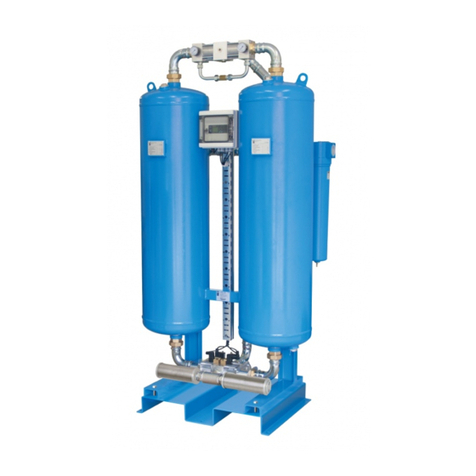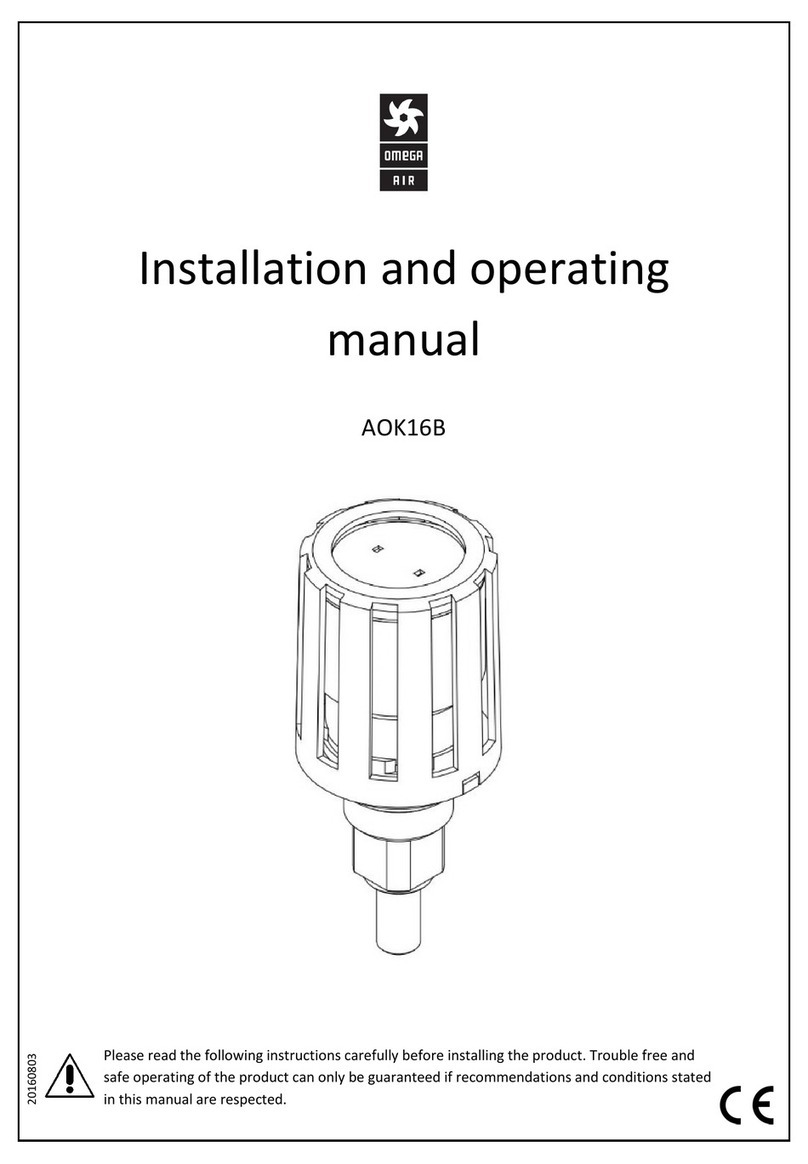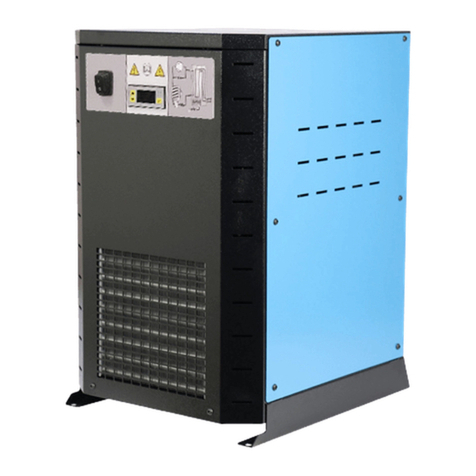
3
Index
1 GENERAL INFORMATION ............................................................................................................................... 5
1.1
D
EVICE INFORM TION
........................................................................................................................................ 5
1.2
S
UPPLIER INFORM TION
..................................................................................................................................... 5
1.3
B
SICS
............................................................................................................................................................ 6
1.4
DSORPTION
D
RYERS
......................................................................................................................................... 6
1.5
DSORPTION
.................................................................................................................................................... 6
1.6
PPROPRI TE USE
.............................................................................................................................................. 7
2 SAFETY INSTRUCTIONS .................................................................................................................................. 8
3 TECHNICAL DATA ......................................................................................................................................... 11
3.1
C
OMPONENTS
................................................................................................................................................. 11
3.2
P
HYSIC L CH R CTERISTICS
............................................................................................................................... 12
3.3
P
RESSURE
E
QUIPMENT
D
IRECTIVE
PED
2014/68/EU
(F
LUID GROUP
2) ................................................................... 14
3.4
E
LECTRIC L CH R CTERISTICS
............................................................................................................................ 14
4 DESCRIPTION OF OPERATION ...................................................................................................................... 15
5 CONTROLLER ............................................................................................................................................... 17
5.1
O
PER TION
.................................................................................................................................................... 20
5.2
T
EST
C
YCLE
.................................................................................................................................................... 22
5.3
D
EW
P
OINT
S
ENSOR
........................................................................................................................................ 22
5.4
D
EW
P
OINT
S
ENSOR
S
ETTING
............................................................................................................................ 23
5.5
S
WITCH
P
OINT
................................................................................................................................................ 24
5.6
S
ET
S
WITCH
P
OINT
.......................................................................................................................................... 24
5.7
D
EW
P
OINT
L RM
......................................................................................................................................... 25
5.8
S
ET
L RM
.................................................................................................................................................... 25
5.9
T
IMER DR IN
.................................................................................................................................................. 26
5.10
T
IMER
D
R IN
S
ETTING
.................................................................................................................................... 27
5.11
I
NPUT
/
O
UTPUT
............................................................................................................................................ 28
5.12
S
ET ST NDBY
................................................................................................................................................ 28
5.13
S
T TISTICS
................................................................................................................................................... 29
EFFICIENCY CONSIDERATIONS ..................................................................................................................... 30
7 TRANSPORTATION ...................................................................................................................................... 31
8 STORAGE ..................................................................................................................................................... 32
9 INSTALLATION ............................................................................................................................................. 33
9.1
I
NITI L INSPECTION
.......................................................................................................................................... 33
9.2
G
ENER L
I
NST LL TION
R
EQUIREMENTS
.............................................................................................................. 33
9.3
I
NST LL TION
L
YOUT
...................................................................................................................................... 34
9.4
I
NST LL TION
................................................................................................................................................. 36
10 COMMISSIONING ...................................................................................................................................... 39
10.1
P
RESSURIS TION
........................................................................................................................................... 39
10.2
O
PENING
O
UTLET
V
LVE
................................................................................................................................ 39
10.3
S
T RT
-
UP
.................................................................................................................................................... 40
11 DECOMMISSIONING .................................................................................................................................. 40
12 ADDITIONAL EQUIPMENT .......................................................................................................................... 41
13 MAINTENANCE .......................................................................................................................................... 42
13.1
R
EPL CEMENT OF THE MOLECUL R SIEVE
........................................................................................................... 45
13.2
R
EPL CEMENT OF THE CONTROL V LVES
............................................................................................................ 47
13.3
R
EPL CEMENT OF THE NON
-
RETURN V LVES
....................................................................................................... 49
13.4
R
EPL CEMENT OF THE PURGE EXH UST SILENCERS
............................................................................................... 51
































